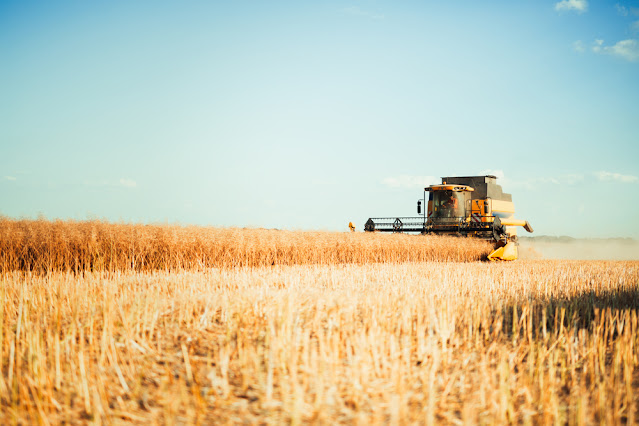Iraq is growing wheat in the desert to ensure food security.
To provide farmers with food security, the Ministry of Agriculture has entrusted fertilizer imports to the private sector and agricultural associations. It stressed that cultivating wheat in desert areas within the current winter plan will provide food security for the country.
This year's winter plan includes the cultivation of one million and 500 thousand dunums in irrigated areas. The plan will be reviewed mid-next month, while four million dunums in desert areas will be grown using groundwater and pivotal systems.
The investment of four million dunums in growing wheat will also contribute to food security for the country, as seen during last winter's season, where five million and 200 thousand tons of wheat were produced and sold to the Ministry of Trade's silos. Another 460 thousand tons were used for seed production by Mesopotamian and Iraqi companies. The preparations for this year's winter plan began early, with its approval by the Council of Ministers on the first day of this month. Seeds and supplies were distributed to farmers at the beginning of last month due to the success of last season and many farmers' readiness to grow crops. Dr. Al-Jubouri remains hopeful that this winter will bring enough rain to rely on instead of surface water.
He disclosed that the ministry had assigned the duty of procuring fertilizers for farmers to both the private sector and the General Union of Agricultural Associations. This is done through a contract with the General Company for Southern Fertilizers. He also mentioned that the government's focus for this year is to boost the assistance given for fertilizers and urea. He expressed optimism that, despite current stability, fertilizer prices will continue to decrease to align with subsidized rates from previous years.
HOW TO GROW WHEAT IN THE DESERT
Very carefully says the Wheat Foundation in Washinton State
Wheat needs between 12 and 15 inches of rain over a growing season to produce a “good crop,” but it can survive on less. This is why many farmers deep in the semi-arid desert microclimates east of the Cascades continue to raise wheat on less than 10 inches of rainfall a year. It’s a delicate practice of determination and science.
Semi-dwarf wheat is a shorter plant with a stronger stalk, and takes less time for the plant to grow to the height needed to produce grain."






